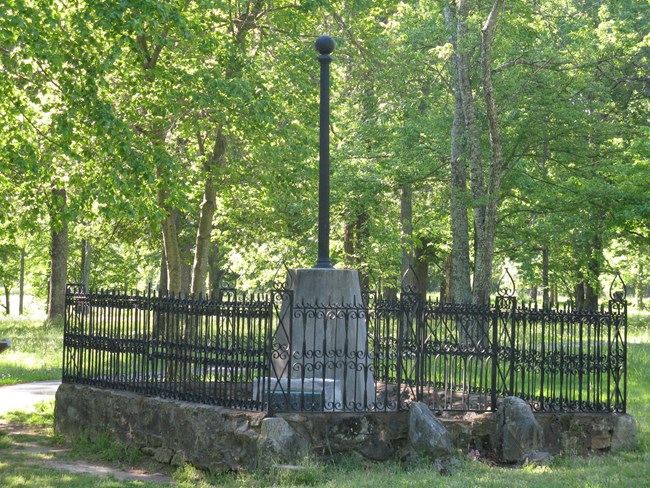
Scott Withrow for NPS The Washington Light Infantry built this monument in 1856, several years before the Civil War. At first glance, the monument is not very impressive. However, this type of design typified Revolutionary War monuments of the era. Before the Civil War, the nation commemorated few battlefields with monuments, and most of these were in the North (such as Bunker Hill). Many southern sites remained agricultural land and the battlefields became forgotten. This monument is significant in that it represents one of the few such examples of the time period to memorialize a Revolutionary War battlefield in the South. It All Started because of a FlagThe monument’s story starts in 1807 with the founding of the Washington Light Infantry, a South Carolina miltia group based in Charleston. From its inception, the Washington Light Infantry participated as a unit in every major war involving the United States until 1919, when the group become part of the SC National Guard. Construction and DedicationAfter contacting the citizens of Spartanburg, SC, the Washington Light Infantry proceeded to the Cowpens Battlefield in April of 1856 to build this monument. They travelled to Laurens, SC by train. From Laurens they marched over 100 miles to Spartanburg. On April 21, after a few days of events in town, the men arrived at the site of the Battle of Cowpens. After surveying the field, the group determined, as best they could, the location where Tarleton’s Dragoons first clashed with Washington’s Cavalry. On this spot, the men decided to erect the monument. After two days it was complete. The finished product consisted of an octagonal base with shell and sand from Sullivans Island and an iron shaft, all capped by a ball with a golden eagle on top. Relics were placed inside the base, including a bottle of water from Eutaw Springs (another important battle involving Col. Washington), a brick from a house near the Eutaw Springs battleground, an account of the Battle of Cowpens, and a roster of the Washington Light Infantry members involved in constructing the monument. A Century of NeglectAt the time of construction, the monument stood on private property. To preserve the land, a group of Spartanburg women decided to raise funds to purchase a one-acre tract around the monument. Through a series of fundraisers and bake sales, the women purchased the deed in July 1856. A group of local men subsequently erected an iron fence around the monument. With these last improvements, the battleground’s first commemorative effort was completed. |
Last updated: August 12, 2020
